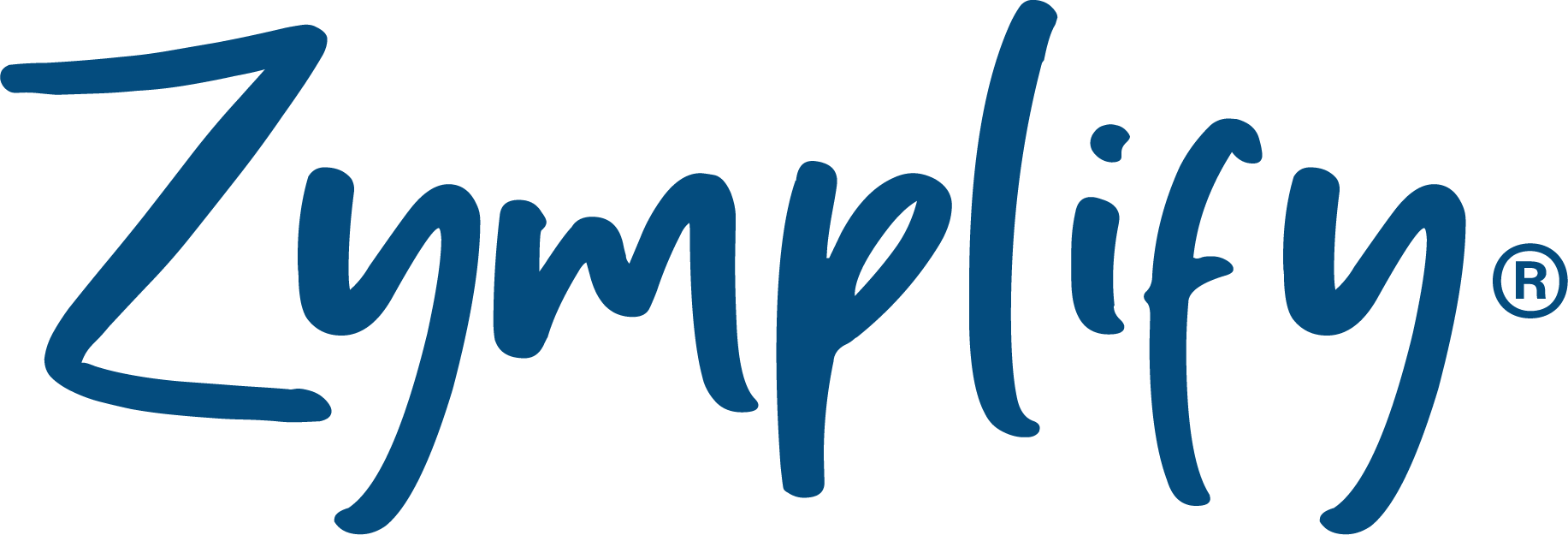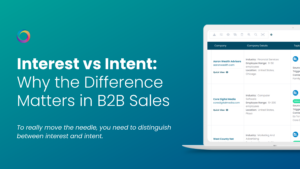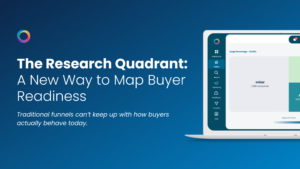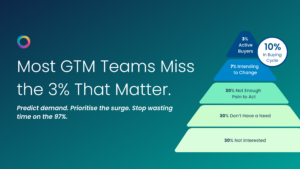Marketing campaigns have changed over the years and we now look to new and improved techniques as opposed to traditional methods.
Inbound marketing campaigns were introduced in recent years and have become more and more important as marketers realise the potential inbound can have in their campaigns. In the past, they would have been juggling with disconnected tools and channels, which left it really difficult to measure results. Unlike traditional marketing campaigns, inbound marketing has one goal, but designed for a range of different channels.
In this blog, we will show you how to create an inbound marketing campaign from start to finish, and how to see and measure results sooner rather than later.
What is an Inbound Marketing Campaign?
An inbound marketing campaign will bring all of your marketing efforts and goals together and align them across all of your marketing channels.
When you have your overall marketing offer in mind, you will nurture the leads from this offer and move them along your tailored marketing funnel until they (hopefully) become customers.
The customer is at the focus of your mind throughout the inbound marketing campaign. It is built to attract customers with exciting and engaging content, as opposed to annoy them will old-school, cold-calling tactics. You’ll look at every stage of the funnel and generate fresh leads with a range of content types in a range of subjects that will hopefully turn them into quality leads and then happy customers.
The inbound marketing campaign will be connected across everything. You will weave interconnected tools to create a personalised and seamless experience for buyers, as well as better results for marketers.
The great thing about an inbound marketing campaign is that it will work in any situation. You will be able to apply the campaign to a webinar or a product launch.
Brainstorming an Idea
When it comes to brainstorming a campaign idea, constantly coming up with creative ideas can be difficult. In order to keep ideas fresh and original, you need to organise your brainstorming sessions, especially if they’re in a group setting.
Include a diverse group of new people from different teams to your brainstorms. Hearing ideas from people with different skill sets and experiences will help you see things from everyone’s perspective and get you out of a creative rut if you’re in one. Ask them to come prepared and have a few ideas already before they come to the meeting. It will speed things up and get the creative juices flowing from the get go.
Don’t be afraid to say no to the bad ideas. Everyone will have good and bad ideas, and the sooner you squash the bad ones out, the quicker you can get to the great ideas.
Why not open it up to the entire company and send out a company email. People might be hesitant to speak up in a group setting, but by giving them the privacy to email their ideas at a later time might encourage them to think again. Or you could provide a place for anonymous submissions.
Creating your Personas
Your buyer persona will be the basis for your inbound marketing campaign, and they must remain at the centre at all times. They are a fictional representation of your customer and you should create your content with them at the forefront of your mind. As a result, you will be able to attract the most valuable visitors, leads and customers to your business.
You might need one or several personas depending on your customer base. When creating them you’ll need to ask yourself a list of questions based on their demographics, their role, goals, challenges etc.
Develop your persona fully and go as in-depth as you can, because you will be able to tailor your content to specifically meet their needs and answer their questions before they have even asked them.
Example questions:
- What is their job role? Title?
- How is their job measured?
- What skills are required?
- What knowledge and tools do they use?
- How do they access their information?
With help from Zymplify’s platform, you can create a persona in 7 easy steps. We will talk you through the entire process and as a result, you will have a detailed and developed persona to work on throughout the inbound marketing campaign. You will be able to assign the content you create to whatever persona it’s targeting, and at what stage of the marketing funnel it needs to be used at. Check out our walk-through video here.
Setting SMART Campaign Goals

Goals are critical in any marketing campaign, but in order to measure the success of your inbound marketing campaign, you must set realistic and smart goals. They will provide structure and purpose while striving towards an end result. Be SMART when setting them.
Specific
You should say exactly what you want out of the inbound marketing campaign and state exactly what you expect. Say who is involved, why it is important, where it’s going to happen and what challenges you’ll face.
Measurable
You must set out criteria for measuring purposes and reaching the end goal.
Attainable
There is no point setting goals for your team that are unrealistic and impossible to reach.
Relevant
It might be obvious, but your goal should matter to your business and address a core initiative.
Timely
Set a realistic timeline which will outline when you should see results by.
Share the overall goals with your team to ensure everyone is on the same page.
Creating the Offer
When trying to generate quality leads, you must be producing quality offers for your visitors. You need to be producing good quality content in a range of different types and covering a range of different subjects that will attract your potential customers. Focus on their marketing messages and create content that will answer the questions they have at the minute.
Types of content you could produce:
- Templates
- Slideshows
- Webinars
- Checklists
- Guides
- Infographics
- eBooks
You must ensure the offer is valuable to your target audience. What will they be typing into Google in the hope of finding something to help solve their problem? Know your audience and know their problems, as well as knowing how they access their information and what type of language resonates with them.
Ensure you are offering them content at the right stage of their buyer’s journey. Map your content around the buyer’s funnel and target your content when they are ready for it. During the top of the funnel, prospects are just become aware of their problem, so you could offer advice or general guidance on a general topic that relates to their needs. Whereas, a potential customer who is in the decision-making stage would need content which is much more specific to their needs. You need to convey exactly how you will help them, as well as why you are better than anyone else.
Designing the Conversion Path
Within inbound marketing, a website visitor becomes a known lead when they come in contact with a conversion path. This can be something like a content offer, a call-to-action or a landing page where they have exchanged their details, and something has triggered an email to their inbox.
Now, this offer must be good enough and seem so irresistible that they are willing to pass over their email address in order to get it. This is where your quality content comes into play.
CTA
A CTA (call-to-action) is a button, an image or a line of text which prompts the website visitor to do exactly what you want them to do. You might want them to sign up for something, enter their details or register for an event.
- Use definite language that will instruct them clearly to do something – discover/ find/ unearth
- Align a CTA to a landing page where you have created tailored content that will attract them further
- Create a flawless and professional design that stands out from the rest of your website design
- You can use Zymplify’s marketing automation platform to create tailored CTAs to appear differently for specific audiences. For example, your visitors could see one thing, your leads another and your customers something else.
Landing Page Creation
You need to have a specifically designed landing page for when your visitors click on the CTA button. This will be intentional and action-orientated. Here are some top tips for creating effective landing pages:
- Keep it short and sweet – uncluttered
- Provide high-quality content that inspires confidence and trust
- Have a flawless and professional design that is synonymous with your brand
- Have clear call to action buttons – tell them exactly what to do
- Create eye-catching headliners, and use your sub-headings to explain further
- Make them an irresistible offer
- Use colour and images to your advantage
- Only ask for information you need
- Make sure you are mobile friendly
- Show off your testimonials
- Make sure it loads quickly, followed by a thank-you page
You should always follow up with a kick-back email to begin that relationship with this potential customer. Zymplify’s marketing automation platform can trigger a kickback email delivering a link to your content straight into their inbox. Not only are you giving them the comfort of accessing the content whenever they want, but you can also add them onto an automated journey by giving them a secondary call-to-action.
Preparing for launch and promotion
Test, test and test again before you go live. Spend some time testing the entire process, along with your team, and take note of anything out of the ordinary. These must be completely fixed before anything goes live.
Social Media
When you have launched you need to start spreading the word immediately. Post across all social media platforms on a regular basis. Create a Snapchat and Instagram story to promote the campaign, and change all of your social media profile and cover photos to branded content.
Blogging
You should use a number of blog posts to promote the campaign as it drives traffic to your website better than any other tool. Use SEO to your advantage and get your content to the top of Google’s results lists. Create a call-to-action at the bottom of each blog post that links to the offer, but write it in a natural and organic way.
Email marketing is still an incredibly effective marketing tool and you need to use it to the best of your advantage when launching your new campaign. Create suspense and hype before the launch date, so that when you do launch, your followers will be patiently waiting to hear from you.
Email segments of your own database about the content and encourage people to share the offer with their friends and colleagues. Include large and visually appealing social sharing buttons in all your email marketing campaigns.
Paid
You can also use paid marketing opportunities to enhance your inbound marketing campaign. Ads across social media platforms like Facebook and Instagram can be effective when used strategically and targeted at your personas.
Measuring and Reporting on Campaign Results
So, you might think it’s all over now that you have actually launched the campaign, but nope, not just yet. Remember those goals you set a few steps back? You need to revisit them and see how you are performing. A few simple marketing metrics you can report on include:
- Website visits
- Conversion rate of visits-to-contacts
- Contacts generated
- Conversion rate of contacts-to-customers
- Customers
Some more advanced marketing metrics which you could report on include:
- Customer Acquisition Cost (CAC)
- Marketing Percentage of Customer Acquisition Costs (M%-CAC)
- Ratio of Customer Lifetime Value to CAC (LTV:CAC)
- Time to Payback CAC
- Marketing-Originated Customer Percentage
- Marketing Influenced Customer Percentage
Marketing channels which you can re-visit and see where you performed the best on, and where needs improvement include:
- Organic searches
- Referrals
- Social Media
- Email marketing
- Paid search
- Paid social
- Direct Traffic
- Offline source
Paid vs. Organic Lead Percentage
You could compare your paid and your organic lead generation, by grouping all your marketing efforts into two larger buckets. Paid is anything you have spent money on with promotion etc, while organic is anything that came in naturally without any cost other than your team’s time.
Measure what percentage of your leads come from each bucket to get a sense of how well your organic efforts are working for you, and if you need to reduce your dependency on advertising.
Conclusion
Inbound marketing campaigns are the future of marketing, and you need to be prioritising them in your overall marketing strategy.
While we quickly skimmed through a range of different topics in this guide, we feel like you now have an overall idea on how to set up and run a successful marketing campaign.
Keep your channels and goals focuses and relevant, keep your buyer personas at the forefront of your mind when creating content, and measure and record your results so you can improve next time.
[button link=”https://zymplify.com/register.php” color=”orange” newwindow=”yes”] Start my free trial[/button]
More from Zymplify
The Power of Inbound Marketing: Are You Really Using it Effectively?
Mind-Blowing Multi-Channel Marketing
Turn Your Website Into a Lead Magnet



